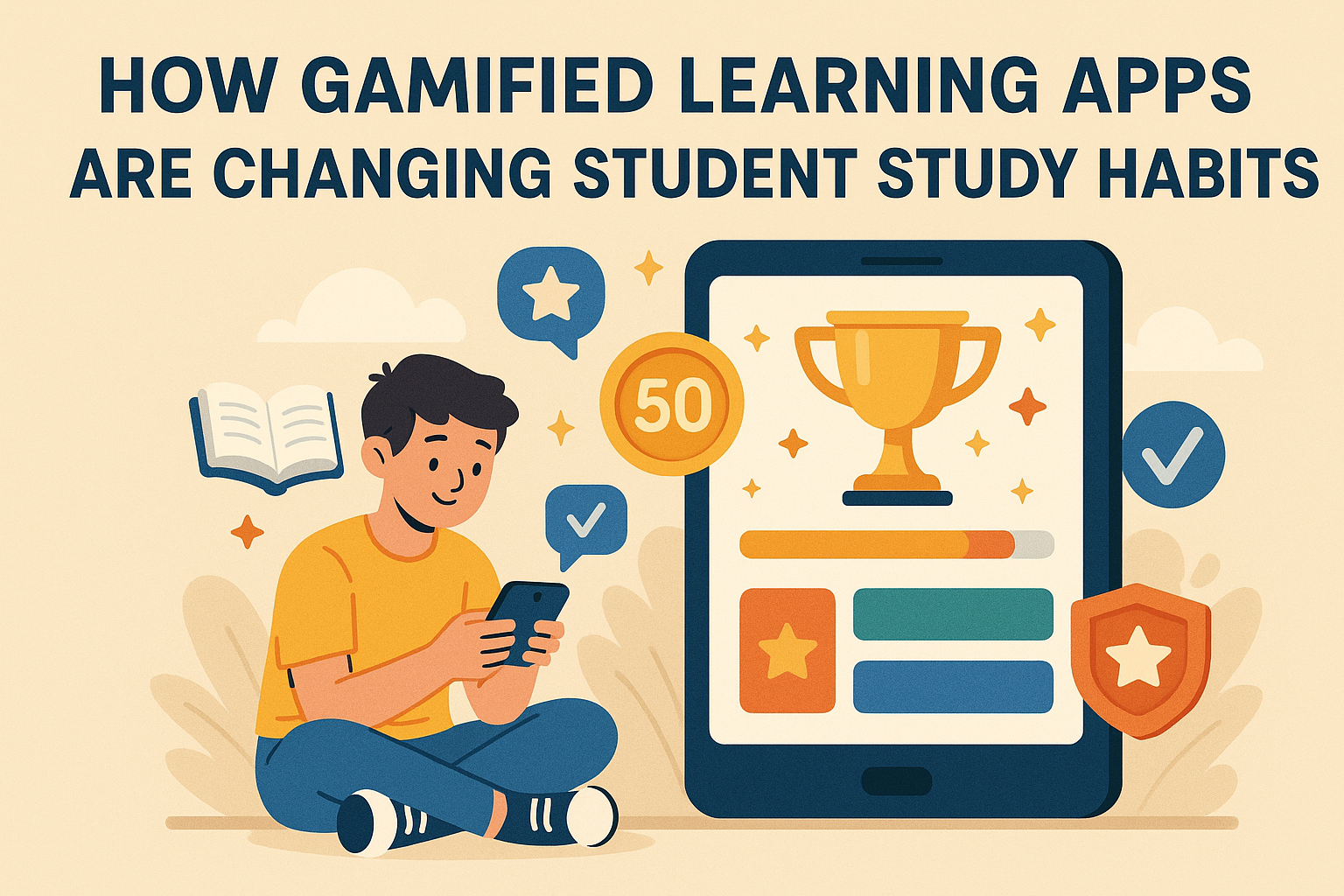


Last updated on: October 2, 2025
6 Views
Yuvika Rathi
College Student

For decades, studying meant long hours of textbooks, highlighters, and memorization. But in today’s digital age, gamification is transforming learning into an engaging, rewarding, and even addictive process.
From a Class 5 student solving math puzzles on Prodigy Math Game, to a college student practicing GRE vocabulary with Quizlet, or a corporate employee upskilling on Coursera with badges and certificates, gamification is no longer an add-on — it’s becoming a core part of modern study habits.
- According to a 2023 HolonIQ report, over 70% of education technology startups now use gamification features, and the market for gamified learning in education is projected to surpass $30 billion by 2030.
Gamified learning is not just “playing games in class.” It is the integration of game mechanics into educational activities. These include:
This blend of education and entertainment is changing how students engage, repeat, and retain knowledge.
Traditional studying often involves passive memorization, but gamified apps encourage active participation.
- Result: Students are no longer just “reading” knowledge; they are applying, experimenting, and practicing it.
Consistency is one of the hardest parts of studying. Gamified apps use psychology-backed reward loops:
- A Frontiers in Psychology study (2022) found that students using gamified apps were 48% more consistent in daily study habits than those using traditional methods.
In conventional exams, failure feels permanent. Gamified learning reframes it as part of the process.
- This develops a growth mindset — mistakes become opportunities, not setbacks.
Gamified learning often shifts study habits from isolation to teamwork:
- Result: Study sessions become social and engaging, promoting both knowledge and communication skills.
Gamified platforms adapt to each student’s strengths and weaknesses:
- Impact: Students save time and focus on targeted improvement, rather than wasting hours on already-mastered material.
Repetition is the foundation of memory, but it’s often boring. Gamification changes that:
- Studies show gamified repetition improves vocabulary and concept recall by up to 40%.
- Gamification is not limited to kids — it’s now part of lifelong learning.
Higher Motivation – Students feel rewarded for progress.
Better Focus – Game elements capture short attention spans.
Increased Retention – Repetition becomes fun, not dull.
Collaborative Learning – Competition + teamwork in classrooms.
Stress-Free Practice – Mistakes become learning opportunities.
Overdependence on Rewards – Students may study only for badges, not understanding.
Screen Addiction – Risk of too much device time.
Equity Issues – Not all students have devices or internet access.
Shallow Engagement – Some apps emphasize speed over deep critical thinking.
Solution? Blended use. Teachers and parents must ensure gamification supports deeper learning, not just quick play.
By 2030, gamified learning won’t just “change habits” — it could replace traditional textbooks as the dominant learning style.
| Aspect | Traditional Study | Gamified Learning |
| Motivation | Driven by exams & grades | Driven by rewards, fun & progress |
| Engagement | Passive (reading, listening) | Active (quizzes, challenges, interaction) |
| Feedback | Delayed (tests, assignments) | Instant (scores, corrections) |
| Collaboration | Limited (group study, projects) | High (team games, leaderboards) |
| Retention | Often rote learning | Reinforced through repetition + rewards |
Gamified learning apps are redefining what it means to study. Instead of stress-filled, monotonous preparation, students now learn through play, practice, and progress tracking. From kids learning math with RPGs to professionals earning badges for coding courses, gamification is shaping consistent, engaging, and future-ready study habits.
While it cannot replace teachers or deep learning entirely, gamification — when balanced — is proving to be one of the most powerful tools in modern education.
Q1: Which gamified learning app is best for students?
A: It depends on the subject — Duolingo (languages), Prodigy (math), Quizizz/Kahoot! (general subjects), BYJU’S (test prep).
Q2: Do gamified apps really improve exam performance?
A: Yes, studies show students retain more and revise more consistently using gamified methods.
Q3: Can gamification replace textbooks?
A: Not entirely. It complements textbooks by making learning engaging and interactive.
Q4: Are gamified apps suitable for all ages?
A: Yes. Kids, university students, and even professionals use gamified apps for learning.